Recent Articles
Popular Makes
Body Types
Top 10 Most Aerodynamic Cars
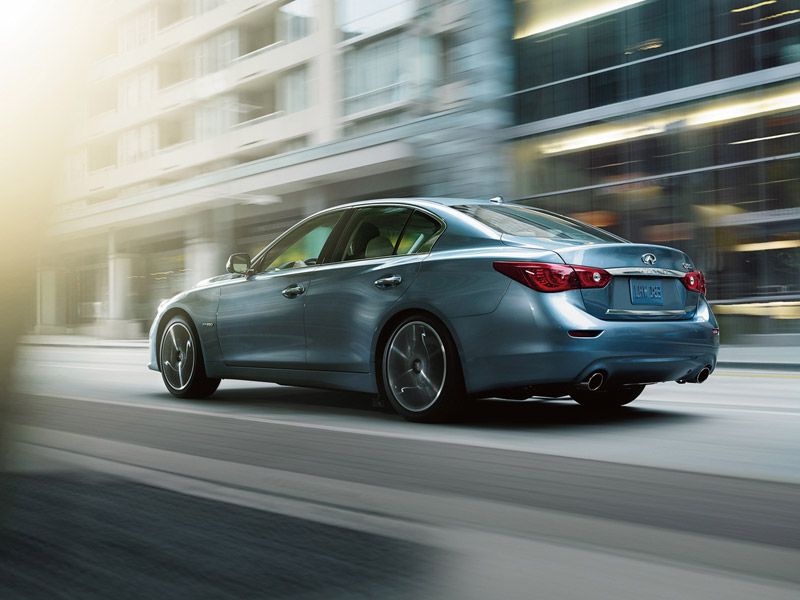
2015 Infiniti Q50 hybrid
Aerodynamics have a profound effect on fuel efficiency and the design studios at every automotive manufacturer are driven to produce vehicles with an ever decreasing coefficient of drag (Cd). If you’ve ever stuck your hand out a car window at speed and flipped it around, you have an idea how drag works. The smaller the forward surface, the easier the air passes. While the upcoming Tesla Model 3 has an enviable estimated cD of 0.21, it falls short of the General Motors EV1, which holds the title of the most aerodynamic car ever sold in America, with a remarkably low cD of 0.195. The limited production Volkswagen XL1 is the most aerodynamic car produced by a major manufacturer to date, with a cD of 0.186, but was only offered in Europe. Our list of the 10 Most Aerodynamic Cars Sold in America takes ties into account, with cDs that range from 0.24 through 0.27. With competition as fierce as it is, we expect this list of the top 10 most aerodynamic cars to be revised with each passing model year.
Mercedes-Benz S-Class
The 2016 Mercedes-Benz S550e plug-in hybrid sedan enjoys a respectable 0.27 coefficient of drag. Advanced aerodynamics and sound dampening ensure a serene ride, while the hybrid drivetrain delivers a compelling combination of performance and efficiency. The S550e’s 3.0-liter biturbo V6 and hybrid electric motor drivetrain pump out 436 horsepower, while delivering an official EPA fuel economy rating of 26 combined miles per gallon on premium gasoline and 58 combined miles per gallon equivalent (MPGe) on gas and electric power. The S550e is the most aerodynamic plug-in hybrid to offer optional front and rear heated and cooled multi contour seats with massage, along with heated and cooled cupholders, heated armrests and door panels. The little luxuries add up to an equation that Tesla can’t match.
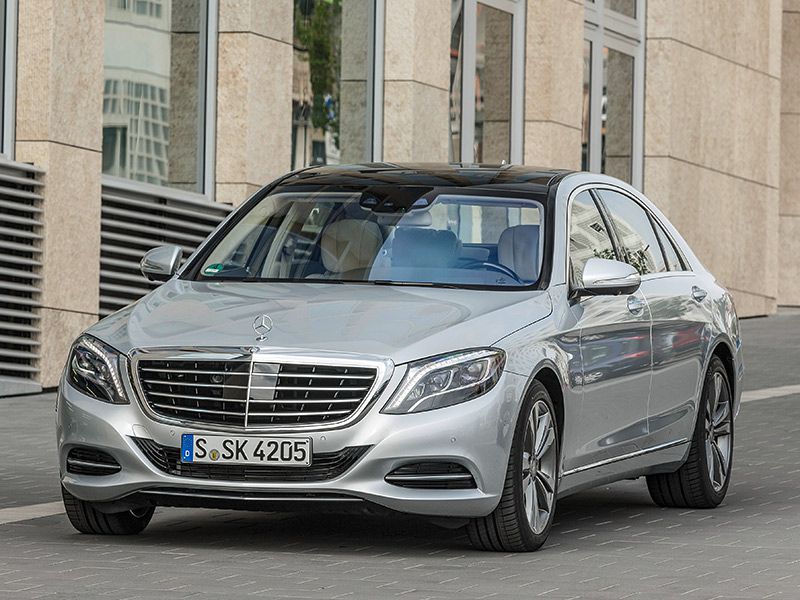
Photo by Mercedes-Benz
Hyundai Elantra Eco
With a slippery 0.27 coefficient of drag and a starting MSRP of $20,650, the 2017 Hyundai Elantra Eco is the second least expensive entry on our list of the Most Aerodynamic Cars Sold in America. The Elantra Eco’s slick front fascia channels air around the front tires using air curtain ducts. Advanced rear tire spats minimize the air hitting the rear tire tread while undercladding channels air efficiently under the compact sedan. An extended deck spoiler breaks air cleanly away from the rear of the car. The 2017 Hyundai Elantra Eco carries an EPA rating of 32 city/40 highway/35 combined MPG and testing shows it’s built to outperform. Affordable aerodynamics are a wonderful thing.
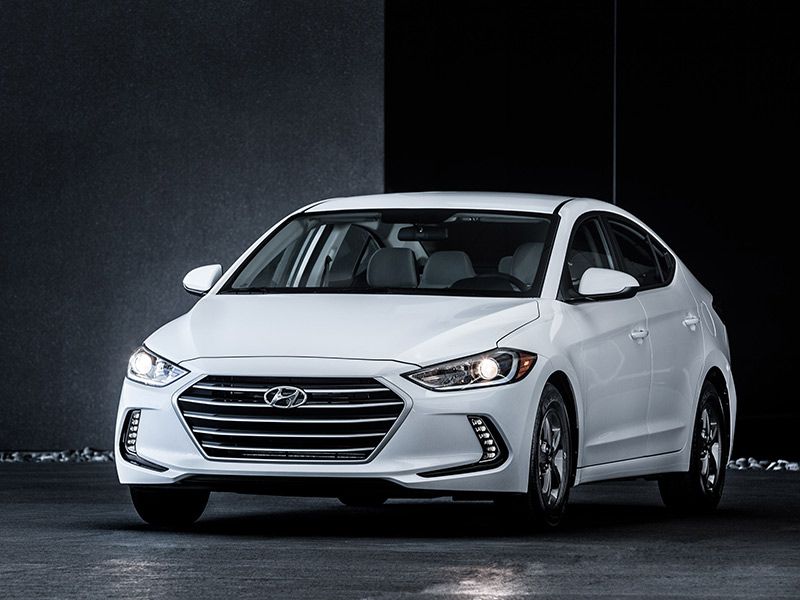
Photo by Hyundai
Infiniti Q50
Same platform, different drivetrains, different Cds. The luxurious 2016 Infiniti Q50 Hybrid Premium has an enviable 0.26 coefficient of drag, as do the Q50 3.0t Premium and Q50 Sport in rear-wheel drive form. But the 3.0t Premium and Sport land a 0.28 Cd when equipped with all-wheel drive. Variations in height, as well as wheel/tire combos, contribute to the change in spec. The Q50 Hybrid is equipped with a powerful 3.5-liter V6 and electric motor drivetrain that produces 360 horsepower with an EPA rating of 28 city/34 highway/30 combined miles per gallon. Opt for AWD and the ratings drop to 27/31/28. But if you need the winter traction, it’s well worth the cost.
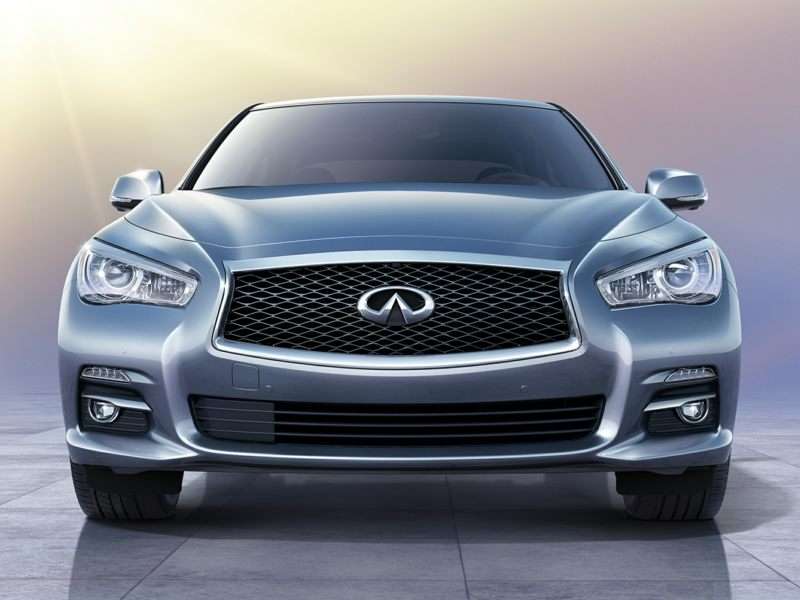
BMW i8
The radical BMW i8 has a 0.26 coefficient of drag, and while it might not be the fastest entry on our list of the Most Aerodynamic Cars Sold in America, it surely looks like it. The exquisite aerodynamic carbon fiber bodywork on the limited production 2-seat i8 coupe ensure an air of exclusivity. You won’t see one of these beauties every time you roll into the Whole Foods parking lot. The twin-turbocharged 1.5-liter 3-cylinder engine and electric motor drivetrain deliver an official EPA fuel economy rating of 28 combined MPG on premium gasoline and 76 MPGe on gas and electric power. And one more thing, it covers the 0-60 MPH sprint in a scant 4.2 seconds.
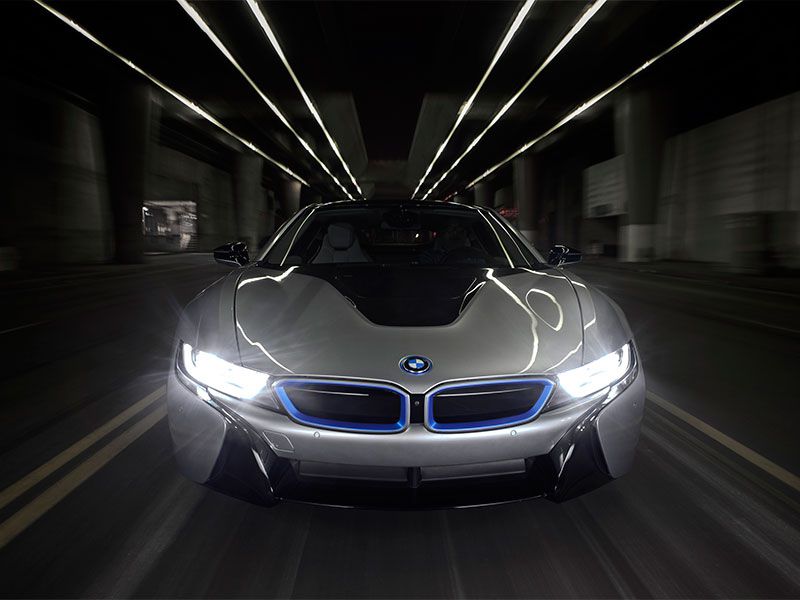
Mazda Mazda3 Sedan
The sleek 2016 Mazda3 sedan has a 0.26 coefficient of drag and a starting MSRP of just $17,845, making it the least expensive entry on our list of the Most Aerodynamic Cars Sold in America. The Mazda3’s SKYACTIV design philosophy proves that advanced aerodynamics, gorgeous design, efficiency, and affordability can be achieved simultaneously. More than just that, the Mazda3 is one sweet handling, fun-to-drive car and the 2017 redesign takes it up a notch. The official EPA fuel economy estimate for the 2.0-liter 6-speed automatic 2016 Mazda3 Sedan is 31 city/42 highway /35 combined miles per gallon. If you're in the market for an affordable aerodynamic compact sports sedan, this one should be at the top of the list.
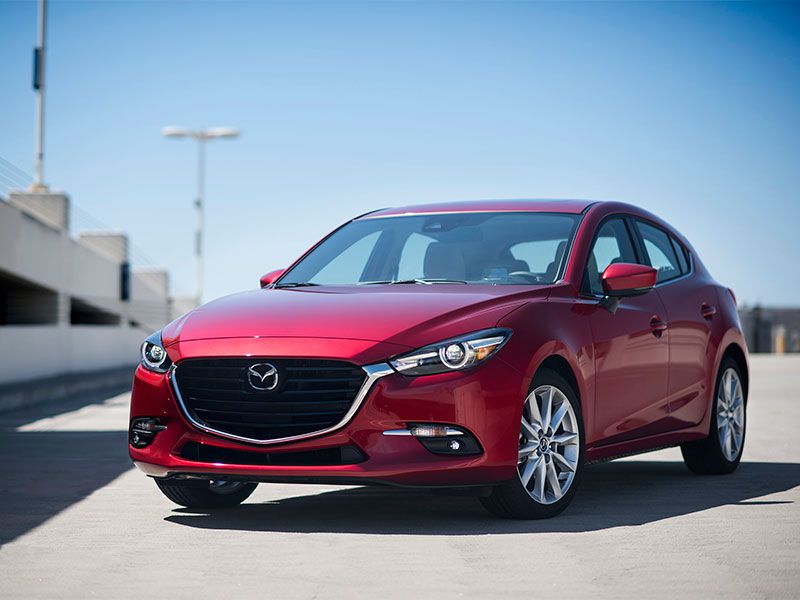
Photo by Mazda
Nissan GT-R
The 2016 Nissan GT-R slices through the wind with a 0.26 coefficient of drag. Air is expertly channeled beneath the GT-R with an aerodynamic front underbody cover and a fully functional rear underbody diffuser. Front “aero-blade” fenders are designed to cut through the onrushing air, while flat-blade windshield wipers minimize turbulence. The front splitter and rear spoiler balance downforce. Needless to say, the GT-R is all about going fast, but just in case you need the official EPA fuel economy estimates, they’re 16 city/22 highway/19 combined MPG. That’s not too shabby, considering the GT-R’s twin-turbocharged VR38DETT V6 pumps out a whopping 565 horsepower on 93 octane premium fuel. Godzilla, indeed.

Photo by Nissan USA
Hyundai Sonata Hybrid
The 2016 Hyundai Sonata Hybrid has a class-leading 0.24 coefficient of drag, which is extraordinary for a mainstream sedan. Changes to the Hybrid’s front grille, front fenders, front bumper, and lights present a smoother face to the wind than the conventional Sonata. Front bumper venting funnels airflow around the front tires and the rear fascia has been optimized as well. Unique eco-spoke alloy wheels minimize disruption along the flanks, and extensive cladding moves air cleanly underneath the car. The official EPA fuel economy estimate for the 2016 Hyundai Sonata Hybrid SE is 40 city/44 highway/42 combined miles per gallon. Configure it with Hyundai's extensive safety technology suite for stress-free commuting.
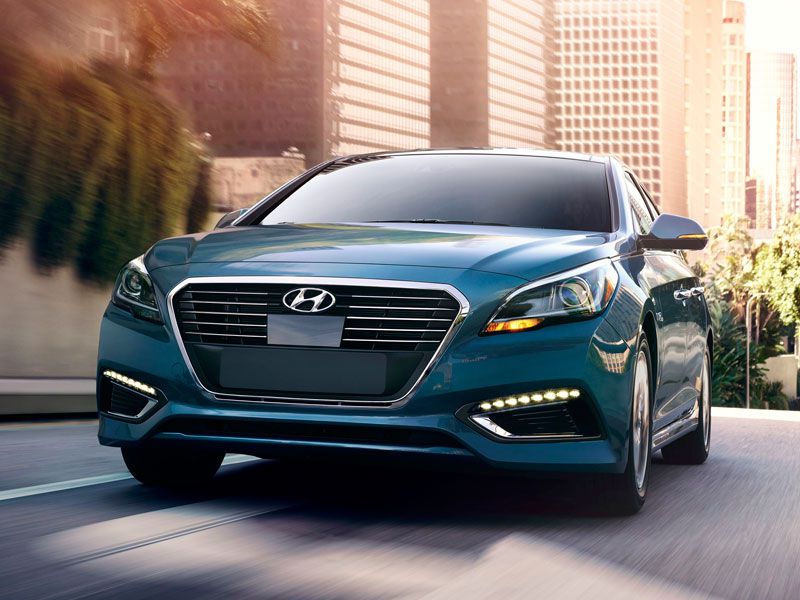
Photo by Hyundai
Tesla Model S
The Tesla Model S sedan’s 0.24 coefficient of drag once seemed remarkably low, but the pencils have been sharpened and the competition has caught up. Both Toyota and Hyundai have matched Tesla’s enviable 0.24 and the upcoming Model 3 promises a stunning 0.21 cD. While the current Model S features a front fascia that’s been redesigned to sync with the Model X and Model 3, there’s been no official mention of an improvement in aerodynamics. The most fuel-efficient 2016 Tesla Model S model, according to the U.S. EPA, is the AWD 60D, with an official estimate of 101 city/107 highway/104 combined MPGe. As with all Teslas, the more range you desire, the more dough you'll drop on the bottom line.
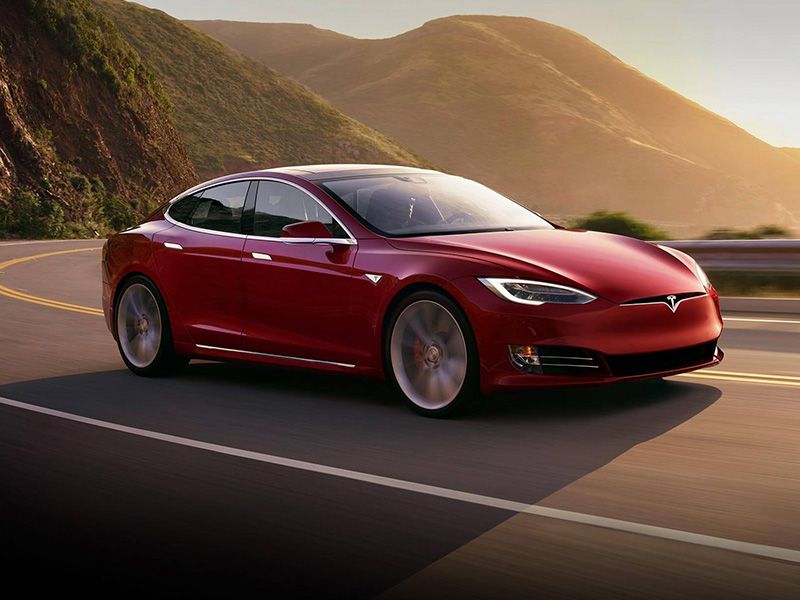
Photo by Tesla
Tesla Model X
The 2017 Tesla Model X’s 0.24 coefficient of drag beats every other 3-row crossover, hands down. A 3-position active rear spoiler automatically adjusts itself dependent on speed, improving efficiency and optimizing lift while traveling on the highway. The rear spoiler is uniquely equipped with a center-high-mount stop lamp. Door handles are flush mounted to smooth the flanks and the remarkably large windshield ushers wind over the roof. The most fuel-efficient 2016 Tesla Model X model, according to the U.S. EPA, is the AWD 75D, with an official estimate of 91 city/95 highway /95 combined MPGe.
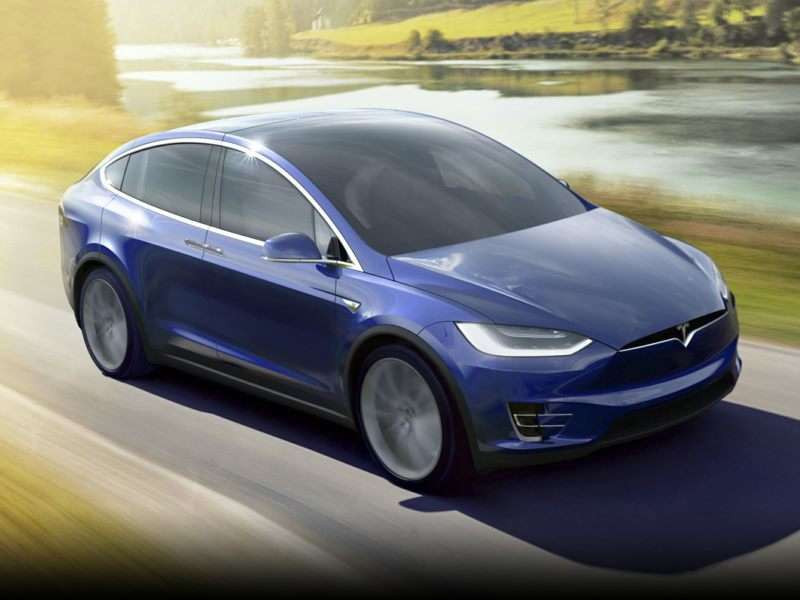
Photo by Tesla
Toyota Prius
The fourth generation 2016 Toyota Prius continues its wind-cheating list-topping tradition with a 0.24 coefficient of drag, shaving a hundredth off the previous version. Interestingly, the new 2017 Prius Prime plug-in hybrid has a slightly higher 0.25 cD, despite its innovative twin-wave rear window. Prius design has evolved over the generations, and the current version is the most dramatic to date, specifically around the front and rear fascias. The official EPA fuel economy estimate for the 2016 Toyota Prius Eco is 58 city/53 highway/56 combined miles per gallon. The other trim levels are rated slightly lower at 54/50/52. Superior aerodynamics ensure that the Prius glides like nothing else.
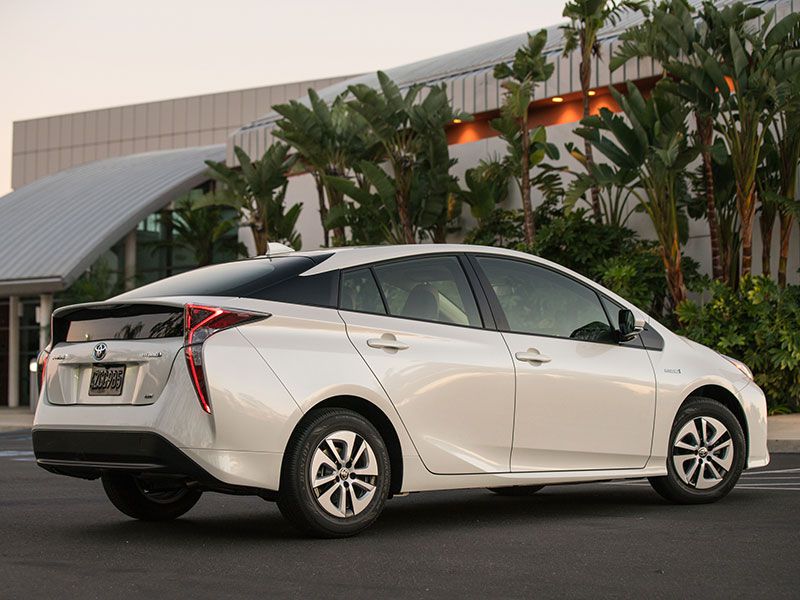
Photo by Toyota